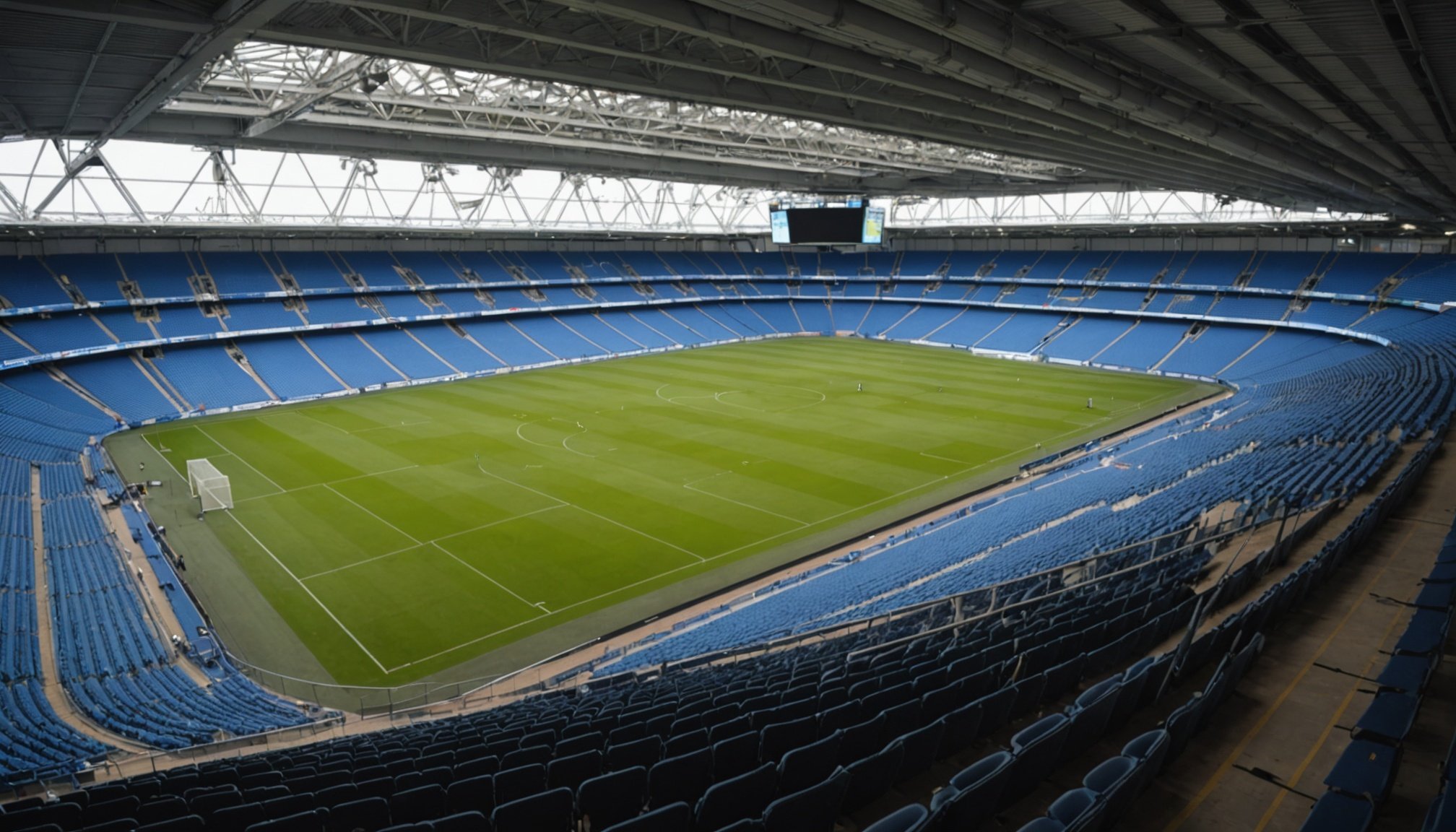Overview of Environmental Impact in Sports Facilities
In recent years, the environmental impact of sports facilities has gained significant attention. Statistics indicate that these venues contribute considerably to ecological concerns across the UK. From excessive energy consumption to waste generation, sports facilities face an uphill battle in minimizing their carbon footprint.
Balancing excellence in sports with ecological responsibilities is crucial for the sustainability of the sector. To achieve this, sports organisations must focus on reducing their dependency on non-renewable resources, enhancing energy efficiency, and promoting recycling measures. Navigating this balance is not merely an ethical concern but a practical necessity, as it influences the long-term viability of sports events and their communities.
Also to discover : Unlocking Fan Connection: Innovative Social Media Strategies for UK Sports Teams
Sustainability challenges in this sector are multifaceted. These range from managing the carbon emissions associated with travel and events to mitigating the impact of water usage and waste disposal. The pressure to uphold performance standards while prioritising environmental considerations has necessitated greater innovation in facilities’ design and management. Sports entities need to integrate green technologies and practices to overcome these challenges effectively.
By addressing these issues head-on, the sports sector can lead by example, setting standards for sustainable practices globally. Such efforts are pivotal for ensuring that the enjoyment of sports today does not compromise the health of our planet for future generations.
In parallel : Boosting Wellbeing: Strategies for UK Sports Clubs to Embed Mental Health Support in Their Programs
Cost-Effective Sustainability Strategies
Embracing sustainability practices doesn’t have to break the bank. In fact, implementing cost-effective strategies can lead to enhanced operational excellence while benefiting both the environment and the bottom line.
Focusing on cost-saving measures through sustainable operations, companies can significantly cut expenses. For instance, by investing in energy-efficient technologies like LED lighting or solar panels, businesses often see a return on investment (ROI) within just a few years. These eco-friendly technologies reduce utility bills and minimise carbon footprints, aligning with sustainability goals.
Companies don’t have to go it alone. Forming strategic partnerships with environmental organizations can provide access to funding and resources. These collaborations can offer expertise and financial support, easing the initial burden of investing in sustainable measures. Moreover, such alliances can open additional avenues for innovation and community engagement, reinforcing a company’s commitment to eco-friendly practices.
Operational excellence is realised when sustainability is woven into the very fabric of day-to-day activities. Simple actions, such as recycling programs and waste reduction initiatives, can drive tangible economic benefits. In a world increasingly moving towards sustainability, integrating these strategies not only helps the planet but ensures long-term financial success.
Case Studies of Successful UK Sports Facilities
Exploring successful implementations within UK sports facilities can offer valuable insights and inspiration. These case studies demonstrate the impact of facility innovations and community involvement.
Facility Innovations
Many UK sports facilities have embraced green technologies to improve sustainability. For example, the installation of solar panels at some football stadiums has significantly reduced carbon footprints. Similarly, sporting event organisers have successfully promoted sustainability by implementing zero-waste policies and sustainable transport options. These initiatives not only mitigate environmental impact but also set a precedent for future events. Impact assessments reveal positive outcomes for local environments, with reductions in energy and water consumption.
Community Engagement
A notable aspect of these successful cases is robust community engagement. Local communities have played a vital role in sustainability efforts. Collaborative projects, like community gardens at sports venues, illustrate how locals contribute to greener practices. Education and outreach programs further enhance environmental awareness, encouraging more people to adopt sustainable habits. Partnerships between sports facilities and communities foster a shared sense of responsibility, creating more enduring results. This collaboration is mutually beneficial, leading to stronger community ties and increased facility revenues. Through these case studies, it’s evident that when sports facilities and communities work together, remarkable progress in sustainability can be achieved effortlessly.
Guidelines for Eco-Friendly Materials
Choosing eco-friendly materials is paramount in fostering sustainable building practices. One effective approach is to prioritize resource selection that has minimal environmental impact while maximizing durability and efficiency. Materials such as bamboo, reclaimed wood, and recycled steel are commendable choices due to their sustainability and end-use properties.
Recycled and upcycled materials provide excellent examples of resource-efficient sports facility projects. Old tires, for instance, have been repurposed as shock-absorbent flooring in gymnasiums, while reclaimed timber is often implemented in creating aesthetic interiors with reduced carbon footprints. Each of these case examples underscores the potential of creative reuse in construction.
Adhering to certifications and standards further ensures compliance with eco-friendly mandates. Often, materials are evaluated for their ecological impact during their life cycles, receiving certifications like LEED or BREEAM. These provide benchmarks for sustainable architecture and facilitate informed decisions.
Incorporating eco-friendly materials and adhering to recognized standards supports a commitment to responsible architecture. By selecting the right resources, builders can lead the charge in creating structures that not only function effectively but also respect environmental imperatives.
Energy-Efficient Practices
Incorporating energy efficiency into sports facilities is a step towards a sustainable future. Implementing renewable energy sources, such as solar panels or wind turbines, can substantially reduce a facility’s carbon footprint. Not only do these sustainable practices support environmental goals, but they also promise a reduction in long-term costs. By integrating smart technology and automation, energy management becomes seamless and more efficient. Automated systems can adjust lighting, heating, and cooling based on occupancy and usage patterns, optimizing energy use without sacrificing comfort or functionality.
The benefits of energy-efficient design extend beyond environmental impact. Facilities that prioritize energy efficiency often experience reduced operational costs. This means resources can be reallocated to other vital areas, such as equipment upgrades or community programs. Moreover, energy-efficient practices can enhance the appeal of a venue to environmentally conscious patrons and potential partners, further increasing its value.
Adopting these practices requires an initial investment, yet the return often justifies the cost. The integration of optimized systems not only makes a facility more sustainable but also positions it as a leader in eco-friendly innovation. By embracing these energy efficiency measures, sports facilities can thrive both economically and environmentally.
Waste Management Techniques
Creating a sustainable environment in sports facilities necessitates effective waste management and recycling programs. Waste management strategies must prioritize sustainability solutions to efficiently reduce waste and encourage recycling, thereby supporting environmental goals.
Recycling programs are at the forefront of this transformation, requiring both community involvement and cross-sector collaboration. An effective program includes a comprehensive education component, ensuring everyone understands the benefits and methods of recycling. Waste management is further enhanced by implementing sustainability solutions such as using compostable materials and promoting reusable items.
Achieving zero waste is a formidable yet commendable goal affecting facility operations and processes. This commitment involves reevaluating sourcing, operations, and waste disposal methods. Implementing zero waste strategies can result in financial savings, improved environmental performance, and an enhanced public image.
For example, a professional sports venue in Seattle recently achieved a remarkable milestone by diverting 95% of its waste from landfills. This success was accomplished through a combination of robust waste separation practices, composting, and liaising with partners to reutilize materials effectively.
Understanding these key waste management techniques and prioritizing recycling programs is crucial in driving forward the vision of sustainable sports facilities. This approach not only protects the environment but also fosters community pride and economic efficiency.
Expert Insights on Environmental Sustainability
The sports industry is undergoing a transformative shift as it embraces environmental sustainability, a topic of interest among stakeholders. Interviews with leading sustainability experts within the sector provide valuable insights. Experts acknowledge a growing responsibility and stress the necessity for sports organizations to adopt environmental goals.
Key trends include the implementation of eco-friendly practices in sports facility construction and the reduction of carbon footprints during events. These changes are crucial as they enable sports organizations to align with global environmental objectives while appealing to eco-conscious fans. Moreover, experts highlight the importance of educating athletes and fans about sustainability, paving the way for a culture that values the environment.
Currently, the UK sports facilities scene is leading the way in integrating sustainable practices, such as installing solar panels and utilising water conservation systems. The future outlook underscores significant progress towards greener operations, with many organizations setting ambitious sustainability targets for the coming years.
In essence, by adopting a proactive stance on environmental issues, the sports industry not only enhances its operational efficiency but also boosts its reputation as a leader in global sustainability efforts. This shift in focus is as much a strategic necessity as it is an ethical obligation.






